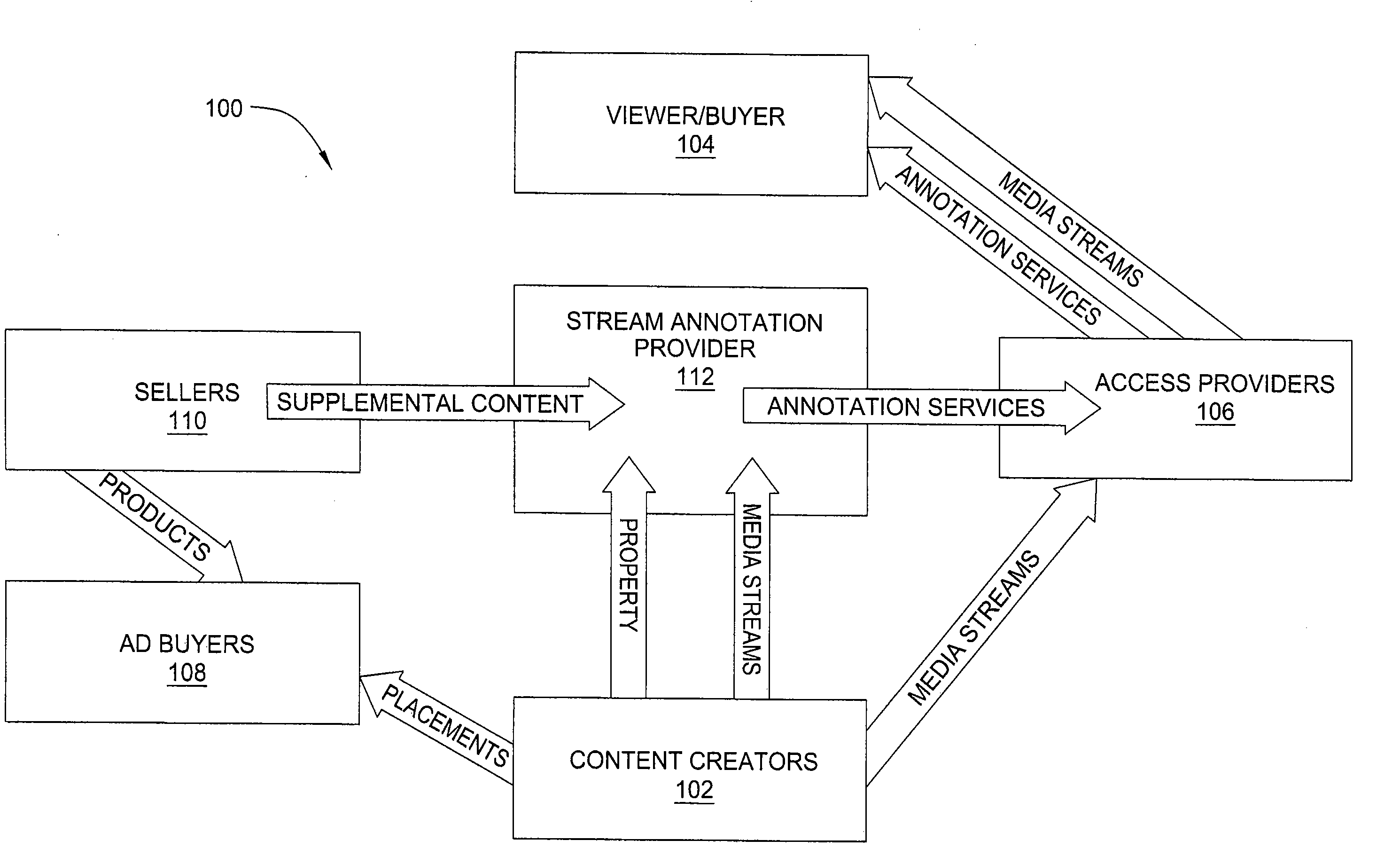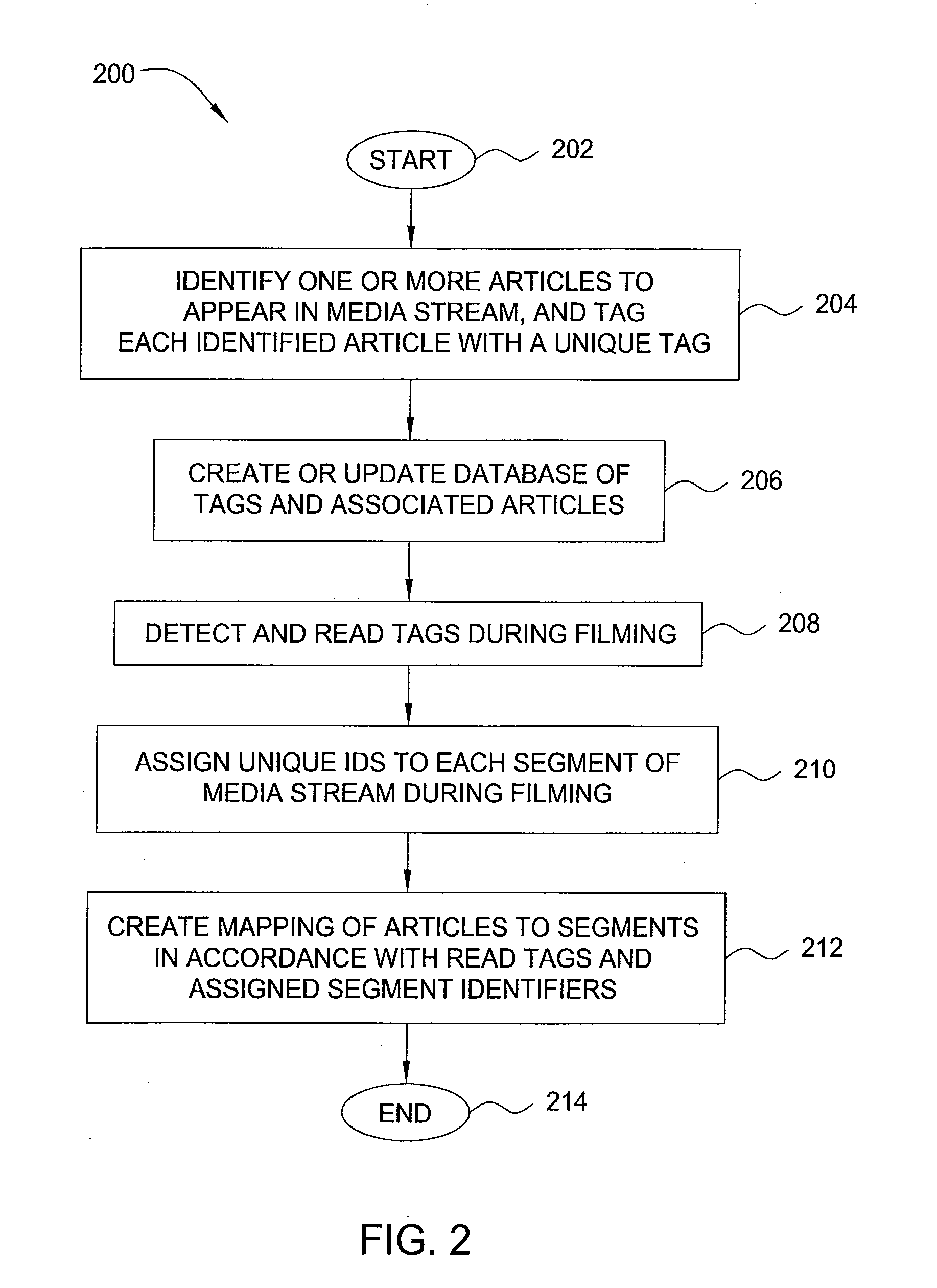Method and apparatus for annotating media streams
a technology of media streams and annotations, applied in the field of methods and advertising, can solve the problems of affecting the user experience, affecting the ability of viewers to learn more about or purchase the article, and affecting the effect of product placemen
- Summary
- Abstract
- Description
- Claims
- Application Information
AI Technical Summary
Problems solved by technology
Method used
Image
Examples
second embodiment
[0308]FIG. 9 is a flow diagram illustrating a method 900 for providing annotated media streams to viewers, according to the present invention. The method 900 may be implemented, for example, by a user device associated with the display of media streams. In particular, the method 900, unlike the method 800, allows for “on the fly” annotation (e.g., without the assistance of a pre-determined mapping).
[0309]The method 900 is initialized at step 902 and proceeds to step 904, where the method 900 displays the media stream via a display device. The method 900 then proceeds to step 906 and receives a first signal from a viewer of the media stream. The first signal indicates that the viewer wishes to view supplemental content relating to at least one article appearing in the media stream. In one embodiment, the first signal is conveyed via the push of a button or via a spoken command. In one embodiment, the method 900, like the method 800, supports multimodal viewer interaction. In one embo...
third embodiment
[0320]FIG. 11 is a flow diagram illustrating a method 1100 for providing annotated media streams to viewers, according to the present invention. Specifically, the method 100, unlike the methods 800 and 900 described above, is configured to support processing of spoken viewer signals. Like the methods 800 and 900, the method 1100 may be implemented by a user device (e.g., a television, a DVD player, a DVR, a set-top box, a portable media player, a personal digital assistant, a personal computer, a mobile phone, an in-flight or in-vehicle entertainment system, a video game console or the like) that has access to annotated media streams.
[0321]The method 1100 is initialized at step 1102 and proceeds to step 1104, where the method 1100 receives a mapping of one or more keywords to one or more items of supplemental content. In one embodiment, the supplemental content is associated with commercial information relating to one or more articles appearing in the media stream, as described abov...
fourth embodiment
[0333]FIG. 12 is a flow diagram illustrating a method 1200 for providing annotated media streams to viewers, according to the present invention. The method 1200 may be implemented, for example, by a user device associated with the display of media streams. In particular, the method 1200, unlike the method 1100, allows for speech-supported “on the fly” annotation (e.g., without the assistance of a pre-determined mapping).
[0334]The method 1200 is initialized at step 1202 and proceeds to step 1204, where the method 1200 displays the media stream via a display device. The method 1200 then proceeds to step 1206 and receives a first speech signal from a viewer of the media stream. The first speech signal indicates that the viewer wishes to view supplemental content about at least one article appearing in the media stream. In one embodiment, the first speech signal indicates that the viewer wishes to view the supplemental content immediately. In another embodiment, the first speech signal ...
PUM
 Login to View More
Login to View More Abstract
Description
Claims
Application Information
 Login to View More
Login to View More - R&D
- Intellectual Property
- Life Sciences
- Materials
- Tech Scout
- Unparalleled Data Quality
- Higher Quality Content
- 60% Fewer Hallucinations
Browse by: Latest US Patents, China's latest patents, Technical Efficacy Thesaurus, Application Domain, Technology Topic, Popular Technical Reports.
© 2025 PatSnap. All rights reserved.Legal|Privacy policy|Modern Slavery Act Transparency Statement|Sitemap|About US| Contact US: help@patsnap.com



